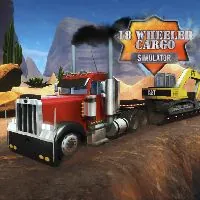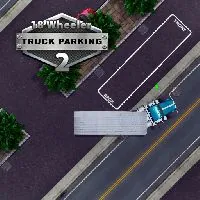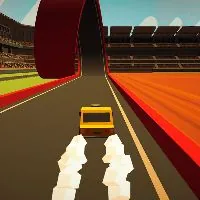HORSE SHOEING
SIMILAR GAMES
Description
Horse Shoeing - GitLab Games
About Horse Shoeing - GitLab Games
At GitLab Games, we're passionate about providing engaging and informative content related to the equestrian world. While our primary focus might be on interactive gaming experiences, we also recognize the importance of understanding the fundamentals of equine care. That's why we've developed this comprehensive guide to horse shoeing, designed to be both accessible to newcomers and valuable to seasoned horse enthusiasts.
Our exploration of horse shoeing goes beyond a simple overview. We delve into the history, the anatomy involved, the various types of shoes available, and the practical considerations that every horse owner should be aware of. We believe that a well-informed owner is a better owner, and our aim is to empower you with the knowledge you need to ensure your horse's hoof health and overall well-being.
The History and Evolution of Horse Shoeing
The practice of horse shoeing dates back centuries, evolving from rudimentary protection methods to the sophisticated techniques employed today. Early forms of hoof protection involved using materials like leather or woven plant fibers to shield the hooves from wear and tear, particularly when traversing rough terrain. As horses became increasingly integral to transportation, agriculture, and warfare, the need for more durable and effective solutions grew. This led to the development of metal shoes, initially crafted by blacksmiths who also worked with iron tools and weapons.
The Romans are credited with popularizing the use of iron horse shoes, adapting existing technologies to create shoes that were nailed to the hoof. This innovation significantly enhanced the horse's ability to travel long distances and carry heavy loads. Over time, different regions and cultures developed their own unique styles of horse shoeing, reflecting local materials, environmental conditions, and the specific needs of the horses they served. Today, horse shoeing is a highly specialized trade, requiring extensive knowledge of equine anatomy, biomechanics, and metallurgy.
Understanding Equine Hoof Anatomy for Proper Shoeing
A thorough understanding of the equine hoof's intricate anatomy is paramount for successful horse shoeing. The hoof is not simply a solid mass; it's a complex structure comprised of several key components that work together to provide support, shock absorption, and traction. The hoof wall, the visible outer layer, is made of a tough, keratinized material similar to human fingernails. It protects the sensitive internal structures of the hoof.
Inside the hoof wall lies the sensitive laminae, which attach the hoof wall to the pedal bone (the last bone in the horse's leg). These laminae are crucial for providing support and distributing weight. The sole, located on the bottom of the hoof, is a concave structure that provides further protection and helps to maintain the hoof's shape. The frog, a V-shaped structure in the center of the sole, plays a vital role in shock absorption and traction. Understanding the relationship between these components is essential for a farrier to properly trim and shoe a horse, ensuring its comfort and soundness.
Types of Horse Shoes: Materials and Designs
The selection of the appropriate type of horse shoe is critical to the horse's performance and health. Shoes are not a one-size-fits-all solution; they come in a wide variety of materials and designs, each suited to specific purposes and conditions. Steel shoes are the most common type, offering durability and affordability. Aluminum shoes are lighter than steel, reducing fatigue and allowing for greater agility, particularly in performance horses.
In addition to the material, the design of the shoe also plays a crucial role. Plain shoes provide basic protection and support. Bar shoes, which have a connecting bar across the heel, offer additional support and stability, often used for horses with certain hoof conditions. Egg bar shoes are similar to bar shoes but have a more rounded shape, providing even greater support. Specialty shoes, such as those with pads or wedges, are used to address specific hoof problems or to improve performance in certain disciplines. The choice of shoe should be made in consultation with a qualified farrier and veterinarian, taking into account the horse's individual needs and the demands placed upon it.
The Shoeing Process: A Step-by-Step Guide
The shoeing process is a meticulous and skilled undertaking that requires precision and attention to detail. The first step is the removal of the old shoes. This is done carefully to avoid damaging the hoof wall. Next, the farrier will trim the hoof to achieve the correct balance and shape. This involves removing excess hoof material to ensure proper weight distribution and alignment.
After trimming, the farrier will select a shoe that is appropriate for the horse's needs and will shape it to fit the hoof. The shoe is then heated and carefully applied to the hoof to check the fit. Once the fit is satisfactory, the shoe is nailed to the hoof using specialized nails. The nails are clinched (bent over) to secure the shoe and prevent it from coming loose. Finally, the farrier will smooth and finish the hoof to ensure a comfortable and aesthetically pleasing result. Regular shoeing is essential for maintaining the horse's hoof health and soundness.
Factors Affecting Shoeing Frequency and Maintenance
The frequency with which a horse needs to be shod depends on several factors, including the horse's activity level, the type of terrain it is working on, and the rate at which its hooves grow. Horses that are ridden frequently or that work on hard surfaces will generally need to be shod more often than horses that are kept in pasture. As a general guideline, most horses need to be shod every six to eight weeks.
Regular maintenance is also crucial for ensuring the longevity and effectiveness of horse shoes. This includes checking the shoes regularly for loose nails or damage. If a shoe becomes loose or damaged, it should be repaired or replaced as soon as possible to prevent injury to the horse. Proper hoof care, including regular cleaning and moisturizing, is also essential for maintaining the health of the hoof and ensuring that the shoes stay securely in place.
Potential Problems and Complications of Horse Shoeing
While horse shoeing is generally a safe and beneficial practice, it is not without potential problems and complications. Improper shoeing can lead to a variety of issues, including hoof cracks, abscesses, and lameness. If the shoes are not properly fitted or if the nails are driven incorrectly, they can damage the sensitive structures of the hoof.
Overgrown hooves can also create problems, leading to imbalances and increased stress on the joints. Certain hoof conditions, such as laminitis and white line disease, can make shoeing more challenging and require specialized treatment. It is important to work with a qualified and experienced farrier who is knowledgeable about equine hoof anatomy and biomechanics to minimize the risk of complications. Regular veterinary checkups can also help to identify and address any potential hoof problems early on.
Finding a Qualified Farrier for Your Horse
Choosing a qualified farrier is one of the most important decisions you can make for your horse's health and well-being. A skilled farrier will have a thorough understanding of equine anatomy, biomechanics, and shoeing techniques. They will be able to assess your horse's individual needs and recommend the appropriate type of shoe and trimming schedule.
When searching for a farrier, it is important to ask for references and to check their credentials. A good farrier will be willing to answer your questions and to explain their approach to shoeing. They will also be able to work in cooperation with your veterinarian to address any specific hoof problems or concerns. Building a strong relationship with a trusted farrier is essential for ensuring the long-term health and soundness of your horse.
Conclusion: The Importance of Proper Horse Shoeing
Proper horse shoeing is an integral aspect of equine care. It impacts the horse's comfort, performance, and overall health. By understanding the principles of shoeing, the anatomy of the hoof, and the various types of shoes available, horse owners can make informed decisions about their horse's care. Working with a qualified farrier and maintaining a regular shoeing schedule are essential for ensuring that your horse's hooves are healthy and strong. At GitLab Games, while we focus on providing engaging games, we believe in empowering our community with valuable knowledge about all aspects of equine care, including the critical practice of horse shoeing.
Play Horse Shoeing for free on GitLab Games, where we offer a dynamic platform featuring thousands of the best unblocked games online. Our extensive library ensures pure enjoyment with an ad-free experience, keeping you immersed in the action without distractions. Accessible from school, work, or home, our Gitlab games deliver seamless fun anywhere you are. We’ve streamlined the experience—play effortlessly with your keyboard or a simple click, tailored to how you like to game. Dive into our collection of unblocked games, including popular categories like unblocked games 66, unblocked games wtf and cool math games Gitlab, and enjoy entertainment that’s always within reach and endlessly captivating.
















































